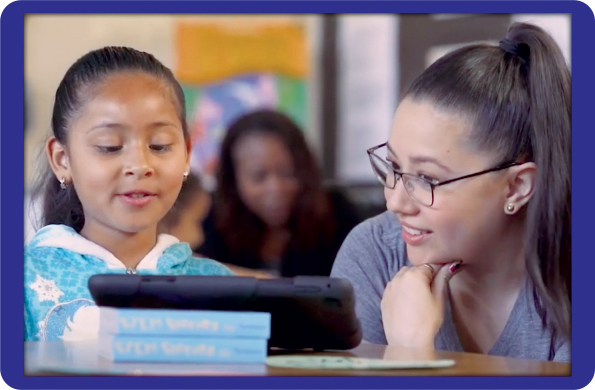

The science of learning is always evolving, but one thing is certain: When kids are engaged and motivated, they learn faster and remember longer. That’s why gamified education is revolutionizing today’s classroom.
Sadly, not every kid can access games that teach. Students with special needs are often left out when the technology doesn’t accommodate their abilities.
But GRA-backed Zyrobotics is changing that.
Rewind to summer of 2013: Zyrobotics founder Ayanna Howard and her students at Georgia Tech are running a summer camp in computer coding for kids with disabilities. They quickly learn that the kids need a better way to interact with coding apps on their tablets. Being engineers, they create one – and that became the baseline innovation for Zyrobotics.

The need they addressed is very real. For people with disabilities, manipulating a computer, tablet or touchscreen can be tough or impossible. An adaptive or assistive “switch” enables the individual to control the device through different means – a joystick, easy button, eye-tracking headgear or directional mouthpiece.
The Bluetooth device Howard and her students came up with served as a flexible interface between that switch and tablet apps. It’s called TabAccess, and it first took the form of a futuristic glove.
“If a child came in who had difficulty swiping, we could change the code so instead they could use a tap,” says Howard, Linda J. and Mark C. Smith Chair Professor of Electrical and Computer Engineering.
The high-tech glove was cool, but as Howard and her colleagues began building Zyrobotics from the licensed IP, they realized they needed to go back to the drawing board. The glove’s ease of use required tweaks to coding – not a problem at a coding camp, but not so easy in everyday situations.


Based on extensive user testing and feedback, they built the current iteration of TabAccess. It’s a simple, cylinder-shaped Bluetooth device with multiple ports to attach to a child’s preferred switch device, whether that’s a big button, a joystick or another type of interface. It’s compatible with both Android and iOS devices and can be easily mounted on wheelchairs and other mobility aids.
Zyrobotics has continued to develop fun educational technology with accessibility baked into its foundations. “Most companies, when they start designing technology, they don’t think about accessibility until after the fact,” Howard says. “When you think about it from the beginning, you have totally different design considerations.”
The company’s newest product is a robot that teaches kids from pre-K to middle school how to code. The robot uses a hybrid style of both block- and text-based coding, which is more accessible for children with diverse learning needs – visual and motor impairments and sensory limitations, for example. It coaches kids to solve puzzles and overcome coding challenges, then provides interactive feedback.


“It’s not enough to just see that your robot hits the goal,” Howard explains. “You need feedback that’s more visual, and the robot will give you socially interactive, immediate feedback for learning.”
Zyrobotics recently received a partnership grant from Microsoft to support STEM Storiez, the startup’s interactive, multisensory books that teach kids STEM concepts while also building reading skills using artificial intelligence. As of early 2019, the company’s TabAccess-compatible apps had been downloaded more than a half-million times, a metric that makes Howard proud.
“This is still kind of word of mouth,” Howard adds. “Even without marketing, people are finding, downloading and using these products. We’re hearing stories about the impacts. Those are the biggest successes.”